Summary
Bill recounts his journey from Netflix, where he witnessed the shift from DVDs to streaming, to PayPal, where he led transformative engineering reforms. At Netflix, he realized that designing software as a throwaway experimentation layer rather than permanent code was key, with multiple concurrent experiments driving user-focused learning. He stresses that engineering should enable learning rather than just code stability. At PayPal, Bill faced legacy technical debt and cultural inertia (organizational antibodies) but pushed for a culture of rapid iteration, collaboration, and customer immersion. He implemented a new technology stack based on Node.js and GitHub, democratized innovation through an internal open source model, and emphasized the need to give Agile a 'brain' by embedding continuous user feedback deeply into the backlog and process. Bill highlights the importance of shared vocabulary between disciplines, collaboration, and continuous customer feedback to keep teams aligned and focused on solving real user problems rather than defending solutions. Drawing on examples from Netflix, PayPal, and Meetup, he underscores that successful teams embrace failure in small increments, enable rapid prototyping, and design for volatility.
Key Insights
-
•
At Netflix, 95% of the UI layer was thrown away within a year, reframing UI as an experimentation layer rather than durable software.
-
•
Engineering's primary goal should be enabling learning, partnering closely with design and product teams.
-
•
Different parts of a software stack have different risk profiles; applying the concept of shearing layers helps accept more risk on the user interface layer to enable faster learning.
-
•
Organizations contain 'antibodies'—cultural and organizational forces resistant to change—that must be understood and navigated to drive transformation.
-
•
PayPal's transformation was accelerated by a top-down mandate combined with intense cross-functional collaboration and frequent user testing.
-
•
Using internal GitHub and open source paradigms democratizes code access and innovation, allowing anyone to contribute and experiment.
-
•
Prototyping should be considered a first-class engineering activity, not a separate or lesser process.
-
•
Agile methods lack an inherent ‘brain’; embedding continuous customer feedback and real user context into the backlog gives Agile teams direction and purpose.
-
•
Engineering teams that share vocabulary and deeply collaborate with designers and product managers produce better outcomes.
-
•
Embracing small incremental failures enables faster learning and avoids the risk of large-scale failures that can paralyze organizations.
Notable Quotes
"I started thinking of the UI layer as the experimentation layer."
"Engineering’s number one goal should be to enable learning."
"You have to design for throw away ability because the majority of experience gets thrown away."
"Organizations contain antibodies—cultural forces that resist change."
"If you don’t soak teams in real customer context, they do dumb things not because they’re dumb, but because they lack context."
"Features eventually become barnacles that are impossible to scrape off the boat."
"Agile needs a brain, and that brain is the continuous customer feedback loop."
"Prototyping isn’t a second-class citizen, it should be a first-class citizen."
"Democratizing code with an internal open source model accelerates innovation."
"I know I will fail, but I will fail in small increments rather than bet everything and fail big."
Or choose a question:
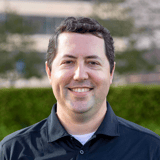


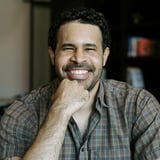
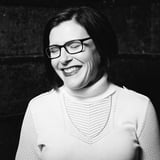


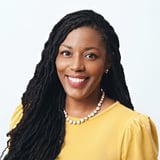
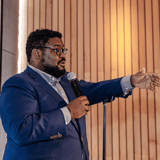


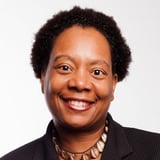

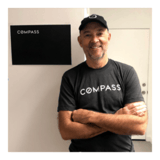

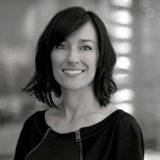
More Videos

"Research ops was actually there before research at TravelPerk, supporting designers first."
Ned Dwyer Emily Stewart James WallisThe Intersection of Design and ResearchOps
September 24, 2024

"In government, the org chart really matters – it influences who talks to whom and who gets to interface."
Michael LandEstablishing Design Operations in Government
February 18, 2021

"When we design for the edges, we get the middle for free."
Sam ProulxTo Boldly Go: The New Frontiers of Accessibility
November 18, 2022

"A UX partner needs to develop a thick skin when engaging senior VPs and directors."
Vasileios XanthopoulosA Top-Down and Bottom-Up Approach to User-Centric Maturity at Scale
January 8, 2024

"Balance UX and CX—making the site work technically is not enough if the content or experience isn’t meaningful."
Andrew Custage Michael MallettThe Digital Journey: Research on Consumer Frustration and Loyalty
March 29, 2023

"Don’t schedule your pilot during the holidays — our first pilot had one graduate because it went through December."
Marjorie Stainback Kelsey KingmanTransforming Strategic Research Capacity through Democratization
October 24, 2019

"75% of cross-functional teams are dysfunctional because silos perpetuate themselves, even in cross-functional teams."
Alla WeinbergCross-Functional Relationship Design
December 6, 2022

"Change is the only constant, so designing insight sharing with self-directed learning is critical."
Jerome “Axle” BrownHow to Use Self-Directed Learning to Ensure Your Research Insights are Heard and Acted Upon
March 11, 2021

"The hiring process typically includes two manager screens and a final interview with project presentations."
Jen Crim Jess Quittner Saritha Kattekola Alex Karr Gurbani PahwaCulture, DIBS & Recruiting
June 11, 2021
















